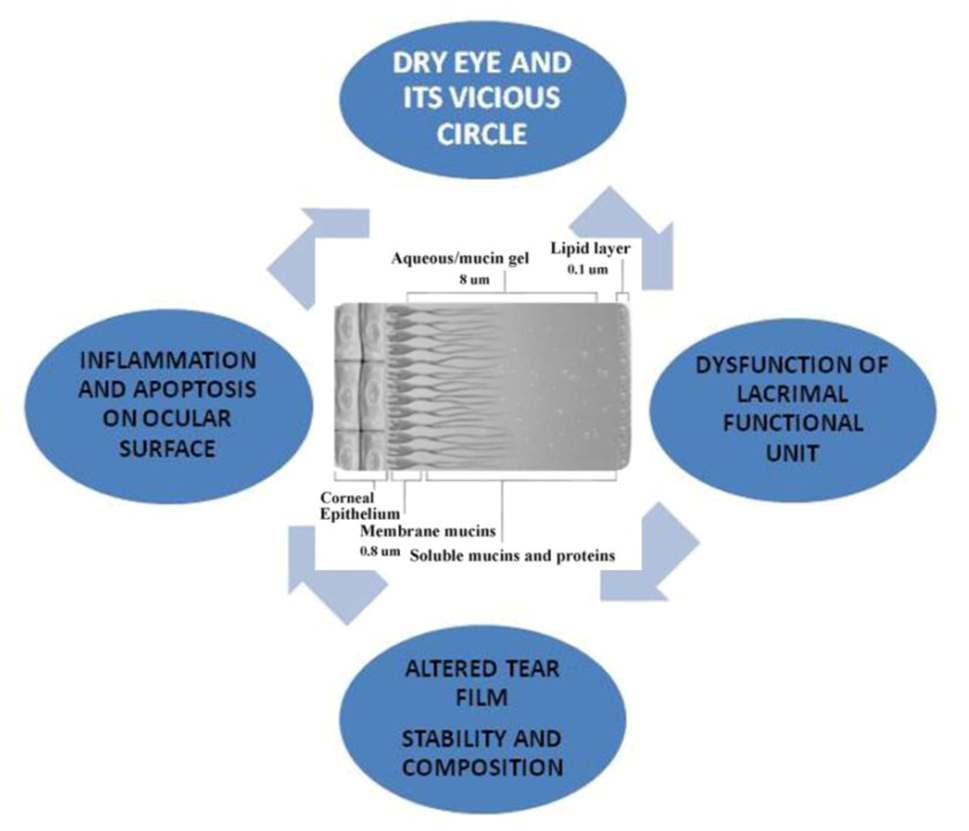The alteration of the delicate balance that regulates the secretion and distribution of the tear film determines the dry eye (DE) syndrome, because the tear film represents the interface between the eye and the environment. Despite having a multifactorial origin, the main risk factors for the emergence of the ocular disease are female gender and advanced age. Likewise, morphological changes in several glands and in chemical composition of their secretions such as proteins, mucins, lipidics, aqueous tears, and salinity, are highly relevant factors to maintain a condition of good health of the ocular anterior segment. Another key factor of recurrence and onset of the disease is the presence of local and/or systemic infiammation that reflex on the ocular surface. However, it is one of the most commonly encountered disease in clinical practice and many other causes related to daily life and to lengthen the average life will contribute to the beginning. This review will consider how and what disorders of the ocular surface are responsible for a widespread pathology so. In the end, the most appropriate and new therapies will be briefly exposed according to the specific pathology.

